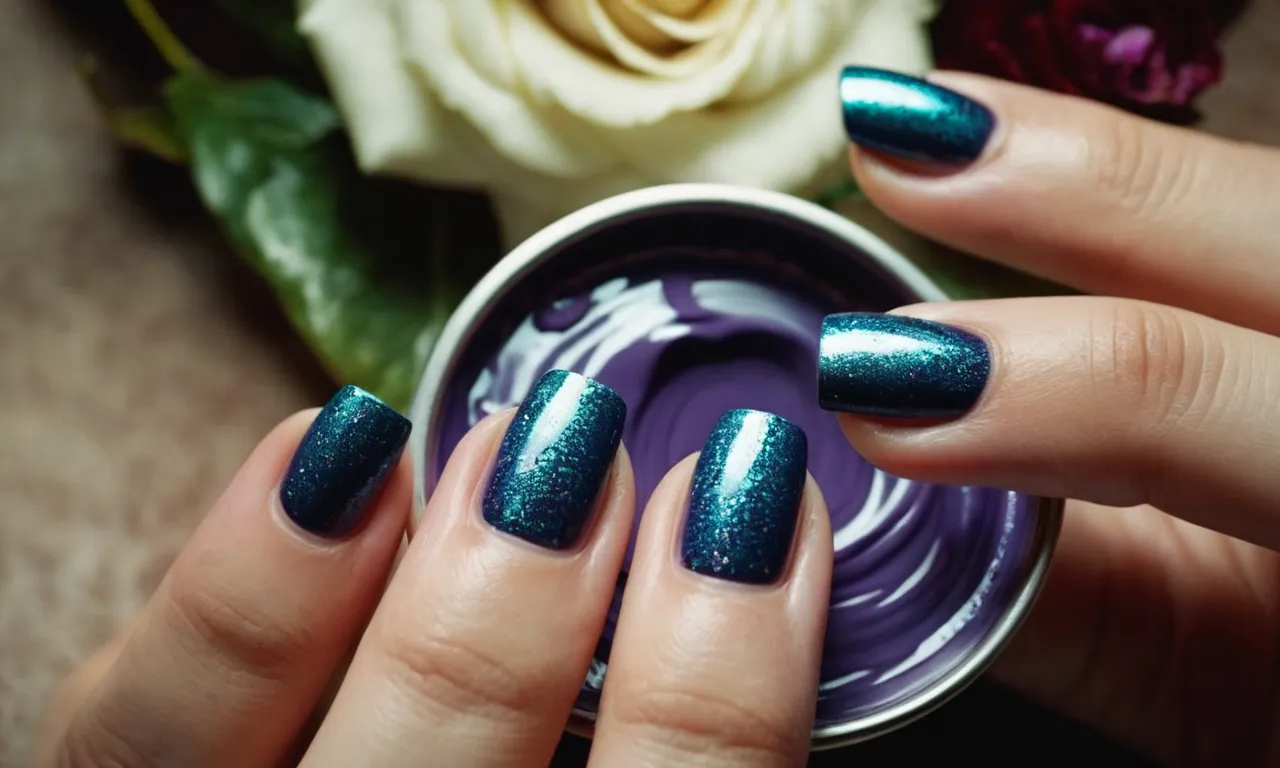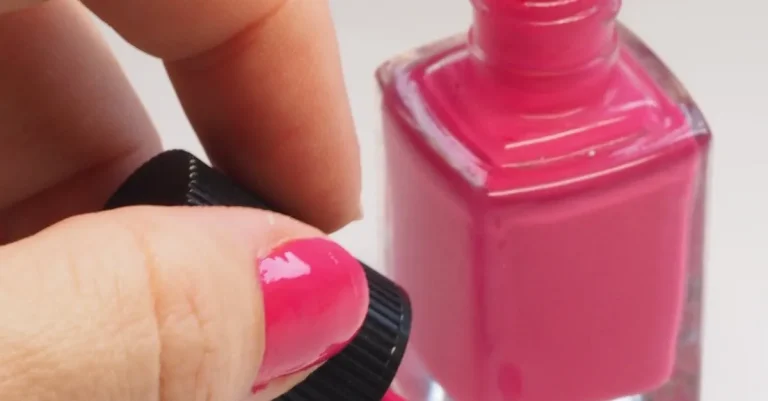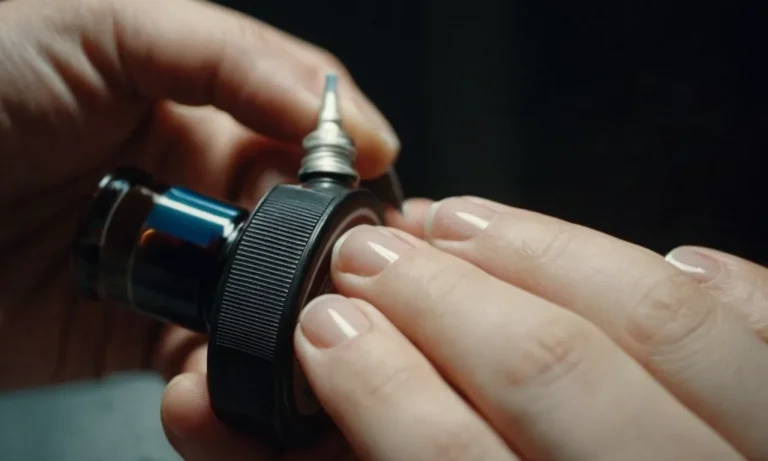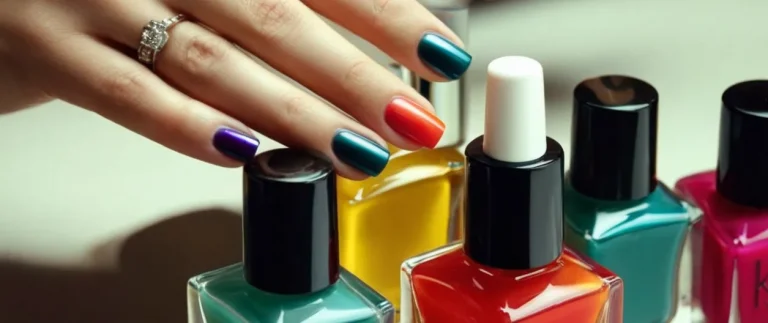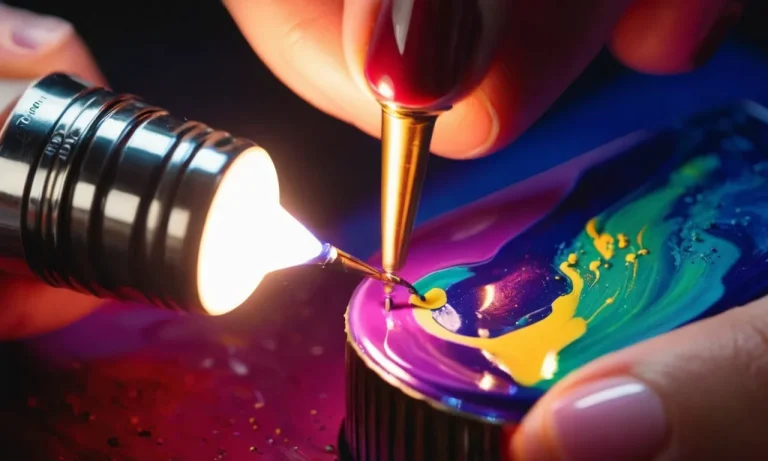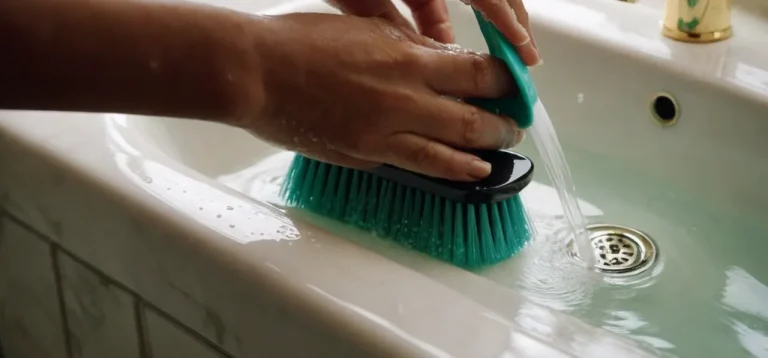How To Remove Nail Polish Stains From Nails: A Step-By-Step Guide
Have you ever painted your nails only to end up with polish staining your nails and skin? Nail polish stains can be frustrating, but thankfully they’re not permanent. With a little time and effort, you can get your nails looking clean again.
If you’re short on time, here’s a quick answer to your question: Use an acetone-based nail polish remover and cotton balls to gently rub the stained areas until the stains fade. Then buff the nails lightly to smooth them out.
In this comprehensive guide, we’ll go over several methods for removing different types of nail polish stains from natural nails, acrylics, gel manicures and more. You’ll also learn tips for preventing stains in the first place.
What Causes Nail Polish Staining?
Nail polish staining is a common nuisance that can leave nails looking dull, discolored and unattractive. The staining occurs when pigments from the nail lacquer penetrate into the nails and become trapped.
While staining is often blamed on cheaper polishes, even high-end brands can cause stubborn stains without proper removal. Understanding the common causes of staining can help prevent this pesky problem.
Poor Quality or Old Nail Polish
Drugstore nail polishes tend to use lower quality pigments that have poorer staying power on the nail. As the lacquer breaks down, the freed pigment particles can then seep into porous areas or microscopic cracks in the nail plate and leave a stain behind.
Using polishes past their prime can have a similar effect. The experts at Nails Magazine note that nail lacquer can start to separate and degrade within a year or two, allowing staining to occur.
Letting Polish Sit Too Long Before Removing
While it may be tempting to let that perfect crimson or glittering top coat remain on nails for weeks at a time, this bad habit paves the way for staining. Long wear times allow the nail polish pigments to fully penetrate into the nail over time.
Once the pigment saturates the nail layers, it resists removal during swiping or rubbing with nail polish remover and acetone. Preventing the issue is as simple as removing polish after 5 to 7 days of wear, before deep staining sets in.
Painting on Stained Nails
Sometimes we’re dismayed to discover lingering stains on nails even after removing old nail polish. While the temptation may be to cover them up with a quick paint job, this causes even more long-term staining.
Each new application drives pigment deeper into the nails, making stains increasingly stubborn to remove. It’s best to thoroughly clean stained nails down to bare, fresh nail before adding new color. Give nails a break between polishes whenever possible.
Using Darker Colors
Does it seem like your fabulous dark vampy red or black polish causes more staining issues? The nail pros say it’s true—deeper, richer pigment shades tend to penetrate and stain nails faster than paler nudes or pastels.
A study in the Journal of Cosmetic Science found that Lacquer containing substantive dyes, like deeper reds, are prone to rapid staining due to pigment breakdown. Light pinks and nudes made with weaker dyes have less issues. So use darker colors sparingly if staining drives you batty.
| Nail Polish Type | Staining Risk |
|---|---|
| Cheap polishes | High |
| Old polishes (1+ years) | High |
| Extended wear (3+ weeks) | High |
| Painting over stains | High |
| Dark colors (black, red, purple) | High |
| Light colors (pink, nude, pastel) | Low |
While occasional stained nails are no cause for alarm, taking some preventive steps can help keep nails looking their best. Avoid risk factors when possible, stick to 5-7 day polish wear times, thoroughly cleanse nails between applications and staining shouldn’t be too troublesome over the long haul.
Removing Stains from Natural Nails
Use Acetone-Based Nail Polish Remover
Acetone is the most effective ingredient for removing stubborn nail polish stains from natural nails. Look for a 100% acetone formula, saturate a cotton ball, and hold it against the stained area for 1-2 minutes. The acetone will break down the pigments and lift the stain.
Be patient and repeat as needed until the stain fades. Just don’t overdo it, as too much acetone can dry out your nails.
Try Non-Acetone Remover
For a gentler approach, go for a non-acetone nail polish remover. These are less drying on natural nails. Apply a non-acetone remover to a cotton ball and rub gently over stains 2-3 times a day until you achieve the desired results. You may need to repeat this process for a few days to see success.
Use Rubbing Alcohol
Rubbing alcohol can be surprisingly effective at removing subtle nail stains. Dip a cotton swab in 70% isopropyl alcohol and gently rub back and forth over the stained nail. Let it sit for 1 minute before rinsing. The alcohol helps break down residue and pigment left behind by polish.
Repeat once or twice daily until the stain fades.
Make a Baking Soda Paste
For a homemade nail stain remover, combine baking soda and lemon juice to form a paste. Apply this mixture to stained nails and let sit for 5 minutes before scrubbing and rinsing. The gentle abrasiveness of baking soda combined with citric acid in lemon work together to gently lift stains without damaging nails.
Use Whitening Toothpaste
Believe it or not, whitening toothpastes like Crest 3D White can be used to remove nail stains! The abrasive ingredients lift discoloration without being too harsh on nails. Simply scrub a small amount of toothpaste onto the stain for 2-3 minutes, focusing on discolored areas.
Rinse thoroughly afterward. Repeat once daily as needed.
Try Lemon Juice
Lemon juice naturally bleaches nails and breaks down stain pigment. Dip a cotton swab in fresh lemon juice and apply directly to the stained part of your nail. Let it sit for 5 minutes before rinsing. The citric acid will work to lighten the stained area so it blends with the rest of the nail.
Use fresh lemon juice 1-2 times daily for best results.
Use Gentle Buffing
For surface level staining, gently buffing nails can help remove discoloration. Use a fine grit nail file or buffer to lightly go over stained areas. Be very careful not to over-file, as thinning your nails can weaken them.
Buff gently in one direction, rinse nails to remove residue, and apply cuticle oil or moisturizer after to prevent dryness. Limit buffing to 1-2 times a week at most.
Removing Stains from Acrylic or Gel Nails
File Off Stained Gel Polish
If your gel manicure has become stained over time, one of the easiest ways to remove the stains is by gently filing off the top layer of colored polish. Use a nail file or buffer specifically designed for gels – harsh files can damage the nail bed underneath.
Gently buff away the stained layer in smooth back-and-forth motions. Avoid pressing too hard or you may thin out the nails too much. Filing off stains works best for minor discoloration confined to the top layer of polish.
Use Foil Wraps with Remover
For stubborn gel polish stains, try using foil wraps or nail wraps soaked in pure acetone or another gel remover solution. Soak small pieces of aluminum foil in the remover, then wrap each foil piece securely over stained nails.
Let sit for 10-15 minutes before unwrapping – the acetone will lift the stained gel polish away from the nail underneath. Be careful not to let the acetone touch skin or cuticles. This method allows targeted removal of stained areas without having to take off the entire gel manicure.
Try a Removal Solution Soak
When stains have penetrated multiple layers of gel polish or the entire manicure, a full soak in remover solution may be necessary. Purchase a pure acetone formula made for gel and dip powders. File the top layer of your manicure lightly first to allow the acetone to penetrate quicker.
Then soak cotton balls in the solution and place one on each fingernail. Wrap nails completely in foil and let sit for 15-20 minutes. The acetone will break down the bonds of the gel polish and lift away the stains. Gently wipe off the leftover residue with a soft cloth.
Be very careful not to tug or peel, as this can damage nails.
Use Gentle Buffing
Once stains have been removed, avoid reapplying gel polish right away. Let nails recover for a few days, keeping them conditioned with cuticle oil. If any subtle stains remain or nails look dull, use a fine buffer block to gently smooth the surface again.
Buff gently in one direction across nails to bring back the natural shine. Harsh back-and-forth buffing can thin nails over time. Be patient and allow nails to fully heal before adding any more polish or gels.
Avoid Harsh Chemicals
When battling stubborn nail stains in the future, take care to avoid harsh chemicals like bleach that claim to instantly lift stains. Not only are these products damaging to nail health, the American Academy of Dermatology Association also warns such chemicals increase the risk of infections and skin irritation.
Look for more nail-friendly stain removal methods. And be diligent about properly removing all traces of polish with each manicure to prevent new stains from forming.
Preventing Future Nail Polish Stains
Use Good Quality Polish
Investing in a high-quality nail polish that isn’t prone to chipping or staining is one of the best ways to avoid those pesky stains. Opt for reputable brands that use quality ingredients and formulas that help the polish adhere properly to the nail.
Stay away from cheap polishes that can flake and stain more easily. Using a salon-quality polish can help minimize staining and chipping issues down the road.
Apply a Base Coat
Applying a base coat underneath your polish creates a protective barrier between your nail and the pigmented polish. This helps prevent the polish from penetrating and staining the nail. Choose a base coat specifically formulated to prevent staining.
Using a ridge-filling base coat can also help create an extra smooth surface for polish application.
Cap the Nail Tip When Painting
Capping the tip involves lightly swiping the nail polish brush over the edge of your nail tip when applying polish. This seals the edge and helps prevent chips and cracks that can lead to stains. Always remember to cap off each nail when polishing for maximum stain prevention.
Use Non-Staining Colors
Some nail polish shades and formulas are more prone to staining than others. Darker, pigment-rich colors like reds, blacks, and bold purples tend to stain nails more often. Sheer nudes and pastels are less likely to leave behind stubborn stains.
If you tend to get staining, stick to lighter polish colors or look for stain-resistant formulas.
Remove Polish Promptly
Leaving polish on the nails for extended periods allows more time for stains to set in. Try to remove nail polish after 3 to 5 days of wear. The longer you wait, the deeper and more stubborn stains become. Regularly removing polish prevents buildup and staining.
Moisturize After Removing Polish
Nails are often dried out and vulnerable after removing polish. Apply cuticle oil or a rich moisturizer after taking off old lacquer. This helps rehydrate the nails and protects them. Well-moisturized nails resist staining better than dry, brittle nails.
Conclusion
Nail polish stains can be a nuisance, but with the right techniques and products, you can get your natural or acrylic nails looking clean again. Be gentle and take your time removing stains rather than using harsh scrubbing.
With some diligent polishing and buffing, you’ll have beautiful, stain-free nails again in no time!
What tips will you try for removing nail polish stains? Let us know in the comments!

